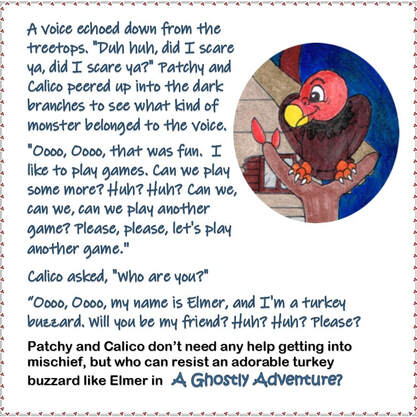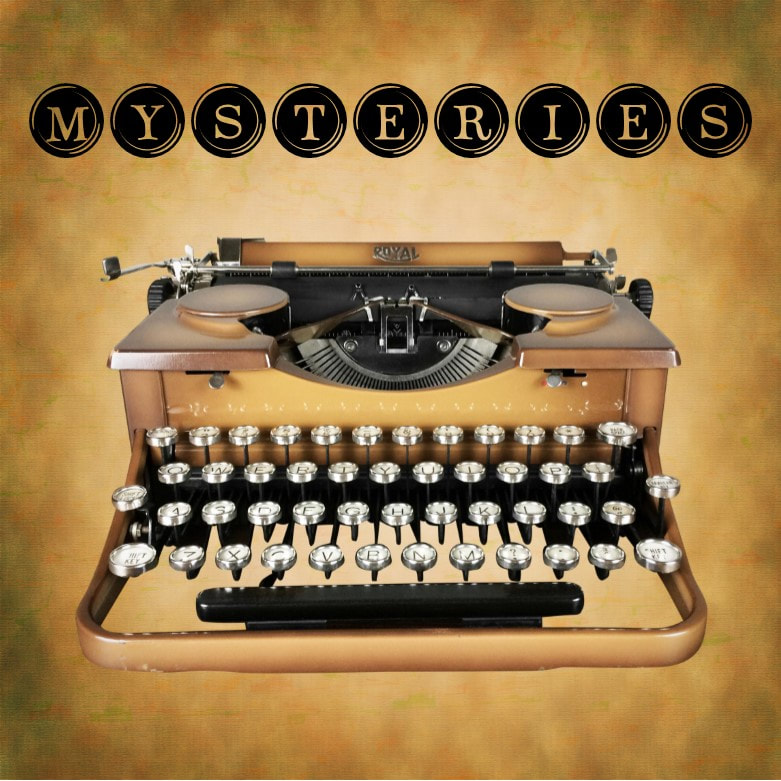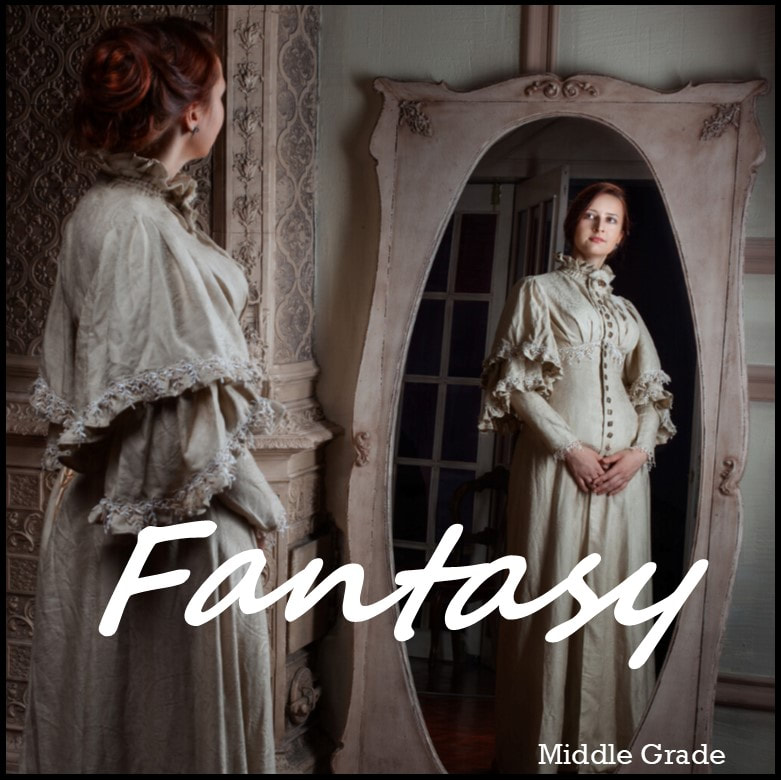When I was around four or five years old, I had a terrifying experience.
My family arrived at my great aunt and uncle's house. After the obligatory hug and kiss to my relatives, I headed for my favorite spot underneath the gigantic tree that shaded their side yard. I didn't get there, though. Instead, I froze in mid-step when an axe tumbled down from one of the limbs. It hovered above the ground, moving up and down like it was waiting to chop me up.
No one believed my tale, but for me, it was a real memory.
It's silly now, but at the time, it was a big deal. That's the closest I've ever come to witnessing a supernatural event. It may not have included an apparition or ghostly figure, but it scared the heck out of me. Needless to say, from that time onward, I kept my distance from the tree.
A few years later, while watching a rerun of The Addams Family, the same scene played out across the TV screen. The infamous axe hung suspended in midair under a tree limb. However, this time, I saw the (supposedly invisible) wires moving it up and down.
Wow, my parents had been right – the whole thing was only a dream. My traumatic experience amounted to nothing more than a false memory implanted in my young mind by a 1960s television show. What an epiphany! I'd figured it out. Sigmund Freud would have been proud of me.
However, fifty-five years after my awe-inspiring insight, I'm still debating the existence of ghosts and mysterious apparitions. Are they real or subliminal ideas programmed in our brains? The existence of spirits has remained a hot topic over the centuries – ever since people began narrating tales around a campfire.
Is There Any Wonder So Many Folks Believe in Ghosts?
We're indoctrinated in spooky stuff from an early age. Halloween, for instance, is an unofficial national holiday.
Halloween's origin dates back to the fifth century BC and the ancient Celtic festival of Samhain (sow-in).
The Celts believed the veil between the worlds of the living and the dead opened during Samhain. Ancestors and other spirits were expected to cross over and stir up trouble. To keep the fairies away from their homes, the Celts left offerings outside the village. To prevent the ghosts from kidnapping any living beings, the villagers dressed up in animal skins and heads, disguising themselves as monsters.
I wonder if the first Celt who stuck an animal skull over his head ever realized he was starting a fad that would still be practiced 2500 years later.
After the Romans took control of Britain, they merged the Samhain festival with two of their own. On the last day of October, the celebration of Feralia commemorates the passing of the dead.
The festival of Pomona honors the Roman goddess of fruit and trees. Her sacred symbol was the apple. Part of the celebration was to grab hold of a dangling apple without using any hands, hence the origin of bobbing for apples.
Many years later, the early Christians discovered they couldn't stop pagan celebrations, so they replaced them with religious alternatives. To replace the Celtic/Roman festival of the dead, November 1 was designated All Saints Day to honor Christian saints and martyrs, and the night before turned into All Hallows Eve. The rest we already know.
Halloween
Halloween traditions have changed over the centuries. Thank goodness! We can all be glad that animal hides and heads have been replaced with less graphic costumes, and most folks don't really believe that fairies and spirits come out to play on October 31. (You don't, do you?)
In any case, during its transition from a Druid ritual to a night of fun for the kids, Halloween has picked up a hodge-podge of other traditions from the old world, such as trick-or-treat and jack-o-lanterns.
What I love most about Halloween are the ghost stories. Some of the tales, myths, and legends have survived for eons. Others are more modern and easier to believe. I added A Ghostly Adventure to the Patchy and Calico children's book series a few years ago because everybody loves Halloween. The spooky holiday opened up so many ways the two principal characters could get in trouble. What better adventure could they undertake than to go hunting for a ghost and actually find one?
A clumsy yet adorable turkey buzzard named Elmer crashes his way into Patchy's great ghost hunt and makes life very interesting for the dog and cat. You'll have to read the book to find out what happens.
Anyway, I hope you have a happy Halloween. Be careful out there. Watch out for those stray ghosts or goblins hanging about!
~~~~~
My family arrived at my great aunt and uncle's house. After the obligatory hug and kiss to my relatives, I headed for my favorite spot underneath the gigantic tree that shaded their side yard. I didn't get there, though. Instead, I froze in mid-step when an axe tumbled down from one of the limbs. It hovered above the ground, moving up and down like it was waiting to chop me up.
No one believed my tale, but for me, it was a real memory.
It's silly now, but at the time, it was a big deal. That's the closest I've ever come to witnessing a supernatural event. It may not have included an apparition or ghostly figure, but it scared the heck out of me. Needless to say, from that time onward, I kept my distance from the tree.
A few years later, while watching a rerun of The Addams Family, the same scene played out across the TV screen. The infamous axe hung suspended in midair under a tree limb. However, this time, I saw the (supposedly invisible) wires moving it up and down.
Wow, my parents had been right – the whole thing was only a dream. My traumatic experience amounted to nothing more than a false memory implanted in my young mind by a 1960s television show. What an epiphany! I'd figured it out. Sigmund Freud would have been proud of me.
However, fifty-five years after my awe-inspiring insight, I'm still debating the existence of ghosts and mysterious apparitions. Are they real or subliminal ideas programmed in our brains? The existence of spirits has remained a hot topic over the centuries – ever since people began narrating tales around a campfire.
Is There Any Wonder So Many Folks Believe in Ghosts?
We're indoctrinated in spooky stuff from an early age. Halloween, for instance, is an unofficial national holiday.
Halloween's origin dates back to the fifth century BC and the ancient Celtic festival of Samhain (sow-in).
The Celts believed the veil between the worlds of the living and the dead opened during Samhain. Ancestors and other spirits were expected to cross over and stir up trouble. To keep the fairies away from their homes, the Celts left offerings outside the village. To prevent the ghosts from kidnapping any living beings, the villagers dressed up in animal skins and heads, disguising themselves as monsters.
I wonder if the first Celt who stuck an animal skull over his head ever realized he was starting a fad that would still be practiced 2500 years later.
After the Romans took control of Britain, they merged the Samhain festival with two of their own. On the last day of October, the celebration of Feralia commemorates the passing of the dead.
The festival of Pomona honors the Roman goddess of fruit and trees. Her sacred symbol was the apple. Part of the celebration was to grab hold of a dangling apple without using any hands, hence the origin of bobbing for apples.
Many years later, the early Christians discovered they couldn't stop pagan celebrations, so they replaced them with religious alternatives. To replace the Celtic/Roman festival of the dead, November 1 was designated All Saints Day to honor Christian saints and martyrs, and the night before turned into All Hallows Eve. The rest we already know.
Halloween
Halloween traditions have changed over the centuries. Thank goodness! We can all be glad that animal hides and heads have been replaced with less graphic costumes, and most folks don't really believe that fairies and spirits come out to play on October 31. (You don't, do you?)
In any case, during its transition from a Druid ritual to a night of fun for the kids, Halloween has picked up a hodge-podge of other traditions from the old world, such as trick-or-treat and jack-o-lanterns.
What I love most about Halloween are the ghost stories. Some of the tales, myths, and legends have survived for eons. Others are more modern and easier to believe. I added A Ghostly Adventure to the Patchy and Calico children's book series a few years ago because everybody loves Halloween. The spooky holiday opened up so many ways the two principal characters could get in trouble. What better adventure could they undertake than to go hunting for a ghost and actually find one?
A clumsy yet adorable turkey buzzard named Elmer crashes his way into Patchy's great ghost hunt and makes life very interesting for the dog and cat. You'll have to read the book to find out what happens.
Anyway, I hope you have a happy Halloween. Be careful out there. Watch out for those stray ghosts or goblins hanging about!
~~~~~

Patchy and Calico's
A Ghostly Adventure
Available from Amazon
Print – https://www.amazon.com/dp/B0975ZYC52/
Kindle and Kindle Unlimited https://www.amazon.com/gp/product/B0175CAORO/
Universal link - http://viewbook.at/pandcghostlyadventure
A Ghostly Adventure
Available from Amazon
Print – https://www.amazon.com/dp/B0975ZYC52/
Kindle and Kindle Unlimited https://www.amazon.com/gp/product/B0175CAORO/
Universal link - http://viewbook.at/pandcghostlyadventure









 RSS Feed
RSS Feed